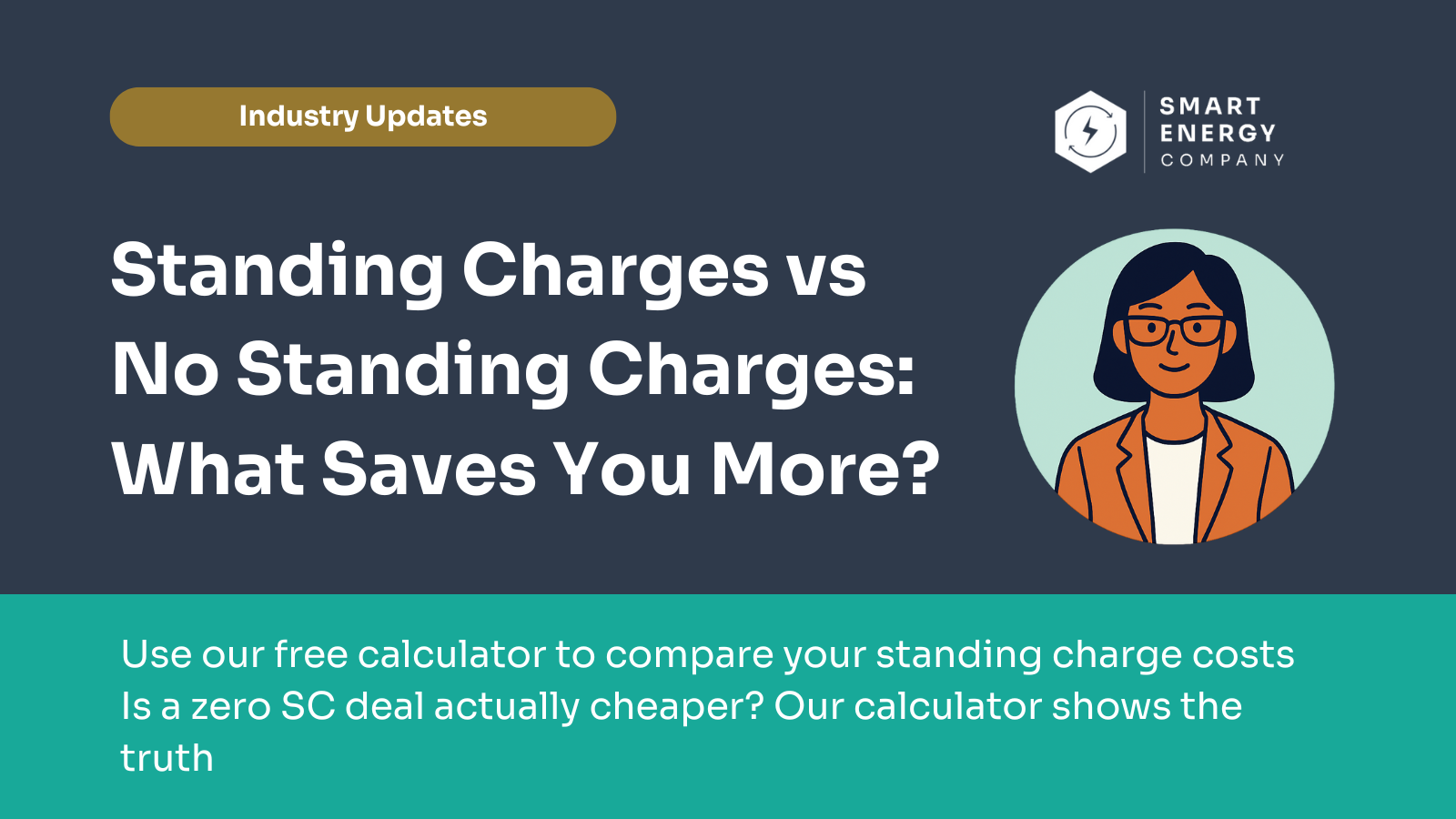No Standing Charge Business Energy Tariffs - Are They Right for You?

More suppliers are now offering 'no standing charge' business energy tariffs. On the surface, it sounds like a win — no daily fees, just pay for what you use. But is that actually better for your business?
Let’s break it down in plain English so you can see whether no standing charge (NSC) or a low unit rate with a standing charge (SC) makes more sense.
🧾 What Is a Standing Charge?
A standing charge is a fixed daily cost applied to your electricity or gas meter. Even if you don’t use any energy, you’ll still pay this charge to stay connected to the network.
Typical charges range from 25p to £3.00/day, depending on your meter type, usage and supplier.
❌ What Is a No Standing Charge Tariff?
With a no standing charge deal, that daily fee is removed — but the unit rate (price per kWh) is usually higher to compensate.
This means:
- You only pay for the energy you use
- But each unit of electricity is more expensive
These tariffs are usually only available for small business meters (non-Half-Hourly) and tend to suit low-usage or seasonal sites.
📊 SC vs. NSC – Simple Example (Illustrative Only)
⚠️ Important: The example below uses estimated pricing for illustration only. Real-life quotes change daily based on the wholesale market, your location, and your usage. For accurate costs, get a personalised quote here.
| Tariff Type | Standing Charge | Unit Rate (Example) | Best For |
|---|---|---|---|
| Standard SC Tariff | £0.50/day | 24p/kWh | Moderate to high usage sites |
| No Standing Charge Deal | £0.00/day | 28p/kWh | Low or seasonal usage businesses |
🧪 Real-World Scenarios
✅ When No Standing Charge Can Work
- Pop-up shops or seasonal venues
Avoid paying daily fees when you’re not trading.
- Storage units or low-activity premises
If you use less than 5–10 kWh/day, the higher unit rate may still be cheaper overall.
- Very small offices or remote hubs
Sites using under 2,000–3,000 kWh per year may benefit — especially if usage is unpredictable.
❌ When a Standing Charge Tariff Is Better
- Retail shops, cafés, salons, or takeaways
You use power every day. Paying a higher unit rate adds up fast.
- Sites with fridges, cookers, or electric heating
Even low-to-medium usage adds cost with a no-SC tariff.
- Larger teams or long hours
If your site is consistently active, a cheaper unit rate almost always saves you more.
📈 Rule of Thumb
If your business uses more than 3,000–4,000 kWh per year, a lower unit rate with a standing charge is usually the cheaper option — because the biggest part of your bill comes from how much energy you use, not the daily fee.
💡 Try Our Live Tariff Comparison Tool
Wondering which option would cost your business more? Use our calculator below.
Just enter your annual electricity usage, and we’ll show you:
- The total cost with a standard standing charge
- The total cost with no standing charge
- Which one is more cost-effective based on your usage
👉 Want to Beat the Quotes You’ve Been Given?
Most suppliers only show you one type of tariff, but it might not be the most cost-effective for your site.
We compare over 28 business energy suppliers to find the best fit based on your usage, site size, and contract length.
✅ No pressure
✅ No sales fluff
✅ Quotes in under 24 hours
🧠 Final Thoughts
'No standing charge' tariffs can work well for seasonal or low-use businesses — but in most cases, especially if your site is active daily, a low unit rate with a standing charge will save you more across the year.
If you’re unsure which way to go, let us help. We’ll run the numbers for you and show both options clearly — no jargon, just smart choices.
📞 Want to chat it through?
Message us or upload a recent bill — we’ll do the hard work for you.


